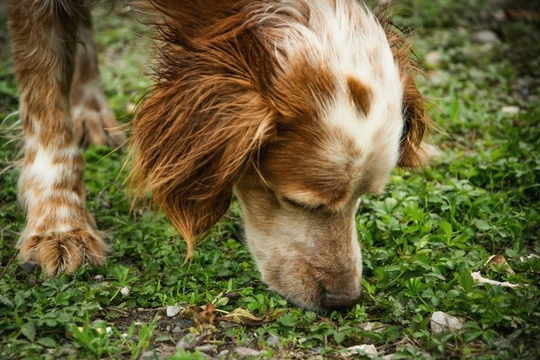
Sniffer dogs – what makes them so special?
It is a marvellous sight to see a sniffer dog in action. It takes months and months of training for both dog and handler to reach the certified level required.
These amazing dogs are used for many types of detection. Although many people associate them with contraband such as illegal drugs, they are also used to detect blood, bodies, currency and electronic devices. Frequently seen in action at travel terminals such as airports, major train stations or UK ports, they will also be found at disaster scenes such as plane crashes, earthquakes or murder scenes. Give a sniffer dog a piece of old clothing or property, they can track the scent of a missing person. All in all, an incredible canine achievement.
Which dogs make the best sniffer dogs?
Obviously, dogs with a super-human sense of smell will be the most likely breeds used to train as sniffers/detection dogs. The most common breeds used within the UK shores are Springer Spaniels, Labradors, German Shepherds and Beagles. In Europe and other parts of the world, you are also likely to come across the Malinois(Belgian Shhepherd), Coonhound or certain breeds of the Pointer, all equally as good for sniffing purposes.
Bassett hounds are also frequently used, as are bloodhounds, as the name suggests. Bloodhounds use their large ears to pull up the scent towards their noses whilst sniffing along the ground – an easy job for a dog that has millions and millions of scent receptors!
In rescue work, one of the favourite breeds to use is the Border Collie, as their ability to cover difficult terrain as well as their acute sense of smell is deemed to be perfect in these instances.
How is a sniffer dog trained?
Potential sniffer dogs are placed with a partner or handler in the early stages of training, around 8 months old, although many sniffers are earmarked as puppies. Intensive training will only begin once the dog is old enough to obey and understand commands given to him by the handler. Obviously, puppies that are too young and mischievous would be somewhat of a handful in the early stages. Some dogs, unfortunately, do not make the high grade necessary for certification, and these will not be allowed to continue training after an acceptable period. Such dogs are often rehomed either with the handler (who has fallen in love with them) or sold on to suitable owners.
Did you realise that a sniffer dogs’ sense of smell is around 2,000 times stronger than that of the human nose? Depending what the dog is looking for will, to a certain extent, manipulate their training.
Sniffer dogs on the alert for drugs will be trained to display ‘aggressive’ behaviour, i.e. scratching, pawing vigorously at the spot where the smell is emanating from, all but trying to dig out the offending items. Training will include using a favourite toy with the scent of the drugs – it is the toy that the dog is after with that distinctive smell, followed by ‘recognition and reward’ for their discovery – extensive praise, patting and a small reward is a bonus.
Other dogs hunting for explosives or harmful devices buried in war zones, will be trained ‘passively’, so as not to disturb any dangerous items and cause harm to themselves or those at the scene. They will not dig and cause the excitement that they have when uncovering a stash of drugs.
Dogs searching for dead bodies (also called cadaver dogs) are trained differently, in that they must recognise the varying scents of a body in the stages of decomposition. Sounds gruesome, but this is the only way. In the early stages, chemically produced synthetic scents are used, then these are replaced by real bodies under decomposition. Even more complicated for the dog, is the difference between bodies underground, above ground or decomposing in water – they must learn the breakdown of the scents for each incidence.
Cadaver dogs can detect bodies up to 4m down when buried. Training such dogs can take anywhere between 18 months and 2 years.
SAR (search and rescue) dogs fall into two categories depending on their hunting method. Tracker dogs will follow a scent along the ground from a ‘site last seen’ starting point, whereas Air Scent Dogs will track with noses in the air and do not need a starting point. The latter of these two types is often used for finding lost hikers or avalanche victims, and they can sniff out victims buried under up to 5 metres below the surface.
Do sniffer dogs have to be retired after service?
Like human beings who have worked, sniffer dogs should retire and enjoy a quiet life, somewhere between 8 and 10 years old. Often their trusted handler will adopt the dog due to the bond that has built between them. Many dogs don’t take too kindly to this lack of activity as suddenly their enjoyment of the hunt is ceased, which they find difficult. Care, attention and a good deal of activity is needed to get these dogs back into normal society, but generally they make excellent pets.
Famous sniffer dogs!
Every so often a sniffer dog emerges as one of the most celebrated, with incredible results during their career. One such dog is Megan, a Springer Spaniel who has sniffed out over 220kg of cocaine, with a street value of £30m! Megan retired in 2014, aged 8, and is known as the most successful sniffers on record.
Treo and Henry, both AES (Arms and Explosives Search) dogs have both been awarded the Dickin Medal for their success in saving the lives of our army troops stationed out in Helmand Province. For them, ‘it was just another day at the office’.
What remarkable animals these dogs all are.



